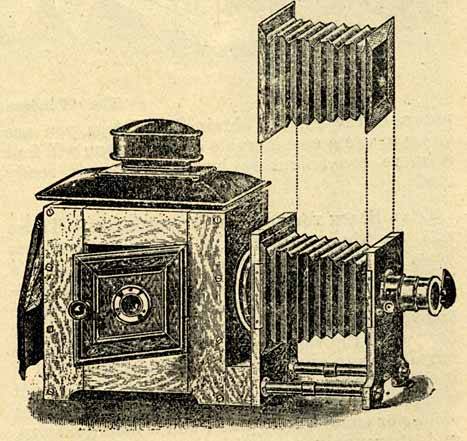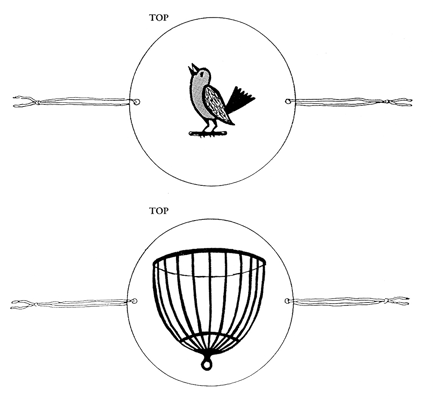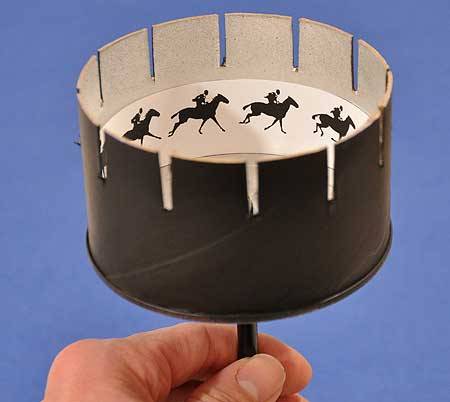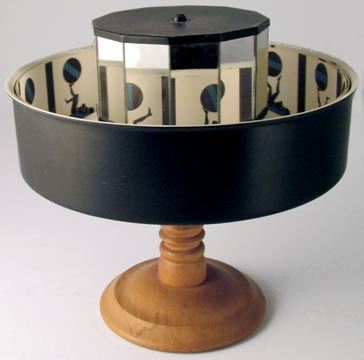#Unit 34: GC1
Explore tagged Tumblr posts
Text
History of Animation
35,000 years ago - The first known attempt at depicting moving images was first seen many milennia ago as cave paintings with several pairs of legs. This is because at the time, there was no way to create actual motion, so early humanity simply drew several poses and sets of limbs to represent movement.
1600 bc - The Egyptian godess Isis had 110 columns covered in her image, with slight tweaks in between each picture. This gave the effect of movement to anyone riding by. Similarly, ancient greeks had a method of painting pottery with sequences, so that when it spun it could suggest movement.
1640 - The magic lantern was invented. Similar to a film projector it would project images onto a flat surface (usually a white wall). The only light source available at the time; oil and candles, were used. This meant the images were usually of a poor quality and flickered.

1824 - The Thuamatrope was invented. It proved animation was possible due to our eyes and mind retaining the last image we saw for a fraction of a second. It was a disc, whith two images on each side e.g a bird and a cage. When spun rapidly it would merge the images together, eg. a bird in a cage.

1841 - Joseph Plateau invented the Phenakistoscope, it combined two discs, one with imagesand one with slits to look through. It gave the illusion of motion when spun. This proved to be a popular form of entertainment among many people.

1867 - the Zoetrope was created. In principle it was fairly similar to the Phenakistoscope, however now multiple people could enjoy it at the same time, due to it being a circular contraption in nature. These devices were sold as toys for children and adults alike as entertainment.

1868 - shortly after the Zoetrope was created, the flipbook appeared. Unlike the Zoetrope and similar ideas before it, its images were in a linear sequence as opposed to circular and could tell a story instead of looping a motion. The flipbook was a book that you could flip through the pages to create the illusion of motion. regardless of it being an old invention, flipbboks still exist today both as young childrens toys, and sometimes used by industry professionals to quickly create an animation without it being digital (often for short ideas later translated to more detailed animation).
1877 - The Praxinoscope came into use as the successor to the Zoetrope. Like the Zoetrope, it was a circular device with images painted on the inner wall. The difference was that instead of narrow slits, mirrors were used to reflect the images. This proved to help with the clarity of the animations, and with more modern lighting eventually being used, the whole experience became easier to view.

Late 1890s to early 1900s - photographs of drawings were played in succession to create the first moving pictures. The most famous of these are matches arranged to convince people to send matches to the troops in the boer war. Another popular early stop motion film was the ‘Humourous Phases of Funny Faces’ https://www.youtube.com/watch?v=wGh6maN4l2I which contained similar techniques, but also the first ever seen frame by frame animation.
1911 - winsor mcCay created 'little nemo' and 'how a mosquito operates' which were the first colour truly frame by frame animation, an amazing feat considering it was the first of it’s kind, ‘little nemo’ itself was 4000 frames long and a huge milestone for animation.
1914 - 'gertie the dinosaur' McCay invites the dinosaur to eat a real apple, the first time an audience could identify with animation as real life and animation intertwine. This could also be seen as the first time animation was used as special effects.
1920s - felix the cat showcasing real personality that a camera cannot capture was a massive hit, and a milestone in creating an animated character with definate personality and memorability. People today still know or remember Felix as a step forward in technology and ability.

1928 - 'steamboat willie' was yet another large milestone as the first animation with synchronised sound. It is mostly reknowned for the first appearance of mickey mouse, a character who later became arguably the most well known cartoon around. It was just the beginning for the golden age of film and animation created by disney.
1932 - 'flowers and trees' was the first fully animated colour cartoon. Created by Disney, it had plenty of charm and well designed characters.

1937 - 'snow white' is premiered as the first fully animated feature length film, paving the way for countless cel animated feature length films, yet again created by Disney, who was nearly talked out of creating it by his family. The cost of this film ran so high he had to remortgage his house to pay for it.
1995 - ‘Toy Story’ was the first feature length film to be made by computer generated 3D models. It was created by Pixar, who were approached by Disney to create a film about a tin toy, later the script was re-written to be how Pixar wanted it to be.
1 note
·
View note